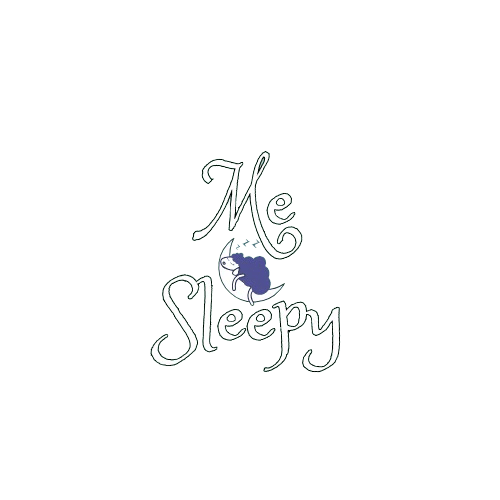Introduction to Narcolepsy-Related Nightmares and Insomnia
Explanation of Narcolepsy as a Chronic Neurological Disorder Affecting Sleep Regulation
Narcolepsy is a chronic neurological disorder that significantly impacts the brain’s ability to regulate sleep-wake cycles. Individuals with narcolepsy often experience excessive daytime sleepiness and sudden sleep attacks, which can disrupt daily activities. This disorder affects the normal sleep architecture, leading to fragmented nighttime sleep and abnormal REM sleep patterns. As a result, individuals with narcolepsy may experience vivid and distressing dreams or nightmares, which can further complicate their sleep quality and overall well-being.
Impact of Nightmares on Narcolepsy Patients, Leading to Insomnia, Increased Fatigue, and Depression
Nightmares are a common yet often overlooked symptom in individuals with narcolepsy. These vivid and disruptive dreams can cause significant distress, leading to a fear of falling asleep. This fear can exacerbate insomnia, resulting in increased fatigue and daytime sleepiness. The chronic nature of these nightmares can also contribute to emotional disturbances, such as anxiety and depression, further impacting the quality of life for narcolepsy patients. Despite their prevalence, nightmares in narcolepsy have not received adequate attention in research or clinical practice, leaving many patients without effective treatment options.
Cognitive Behavioral Therapy (CBT) for Narcolepsy-Related Nightmares
Overview of CBT-N as a Treatment for Trauma-Related Nightmares and Its Novel Application to Narcolepsy
Cognitive Behavioral Therapy for Nightmares (CBT-N) has been established as an effective treatment for trauma-related nightmares. This therapeutic approach focuses on altering the cognitive and behavioral patterns associated with nightmares, helping patients to reduce their frequency and severity. Recently, researchers have begun exploring the application of CBT-N for narcolepsy-related nightmares, recognizing its potential to address the unique challenges faced by these patients. By adapting CBT-N techniques, such as rescripting, therapists aim to provide narcolepsy patients with tools to manage and transform their distressing dreams.
Description of the Rescripting Technique Used in CBT-N, Where Patients Rewrite Nightmares into Preferred Dreams
A key component of CBT-N is the rescripting technique, which empowers patients to take control of their nightmares by rewriting them into more positive and preferred dream scenarios. During therapy sessions, patients are encouraged to imagine their nightmares as if they were writing a movie script, altering the narrative to create a more favorable outcome. This process involves rehearsing the revised dream script before bedtime, allowing patients to mentally prepare for a more positive dream experience. The rescripting technique not only reduces the emotional impact of nightmares but also enhances patients’ sense of self-efficacy in managing their symptoms. By transforming their nightmares into preferred dreams, patients can experience improved sleep quality and a reduction in nightmare-related distress.
Combining CBT with Lucid Dreaming Techniques
Introduction to the Use of Targeted Lucidity Reactivation (TLR) to Induce Lucid Dreams in Narcolepsy Patients
In an innovative approach to treating narcolepsy-related nightmares, researchers have combined Cognitive Behavioral Therapy for Nightmares (CBT-N) with lucid dreaming techniques. One such technique is Targeted Lucidity Reactivation (TLR), which aims to induce lucid dreams in patients. Lucid dreaming occurs when a person becomes aware that they are dreaming and can potentially influence the dream’s narrative. For individuals with narcolepsy, who often experience vivid dreams during REM sleep, TLR offers a promising avenue to harness this natural tendency and transform distressing nightmares into more positive experiences.
Explanation of the Procedure Involving Sound Cues During REM Sleep to Trigger Lucid Dreaming and Promote Rescripted Dream Scenarios
The TLR procedure involves using sound cues during the REM stage of sleep to trigger lucid dreaming and promote rescripted dream scenarios. Researchers monitor participants’ brain activity using an electroencephalogram (EEG) to determine when they enter REM sleep. Once REM is detected, sound cues associated with lucidity and the rescripted dream are softly played. These cues, such as a piano chord or specific words like “calm” or “family,” are introduced to participants during their waking hours as they rehearse their preferred dream scripts. The goal is to create an association between the sound cues and the rescripted dreams, enabling participants to experience these positive scenarios during their sleep. This innovative approach not only enhances the effectiveness of CBT-N but also empowers patients to take control of their dream experiences.
Outcomes and Implications for Insomnia and Nightmare Treatment
Summary of the Study’s Findings: Reduced Nightmare Severity and Frequency Among Participants
The study conducted by Northwestern Medicine demonstrated promising results in reducing the severity and frequency of nightmares among participants. All six patients involved in the trial reported a decrease in nightmare intensity, with four of them experiencing a reduction below the threshold for nightmare disorder. This significant improvement highlights the potential of combining CBT-N with lucid dreaming techniques to provide effective relief for narcolepsy-related nightmares. Participants also reported feeling less anxious and ashamed about their nightmares, indicating a positive shift in their emotional well-being.
Discussion on the Potential of These Methods to Transform Sleep Quality and Reduce Insomnia Symptoms, Enhancing Overall Well-Being and Self-Efficacy in Managing Narcolepsy-Related Symptoms
The integration of CBT-N and lucid dreaming techniques offers a novel approach to improving sleep quality and reducing insomnia symptoms in individuals with narcolepsy. By empowering patients to rewrite their nightmares and experience lucid dreams, these methods enhance self-efficacy in managing narcolepsy-related symptoms. The ability to transform distressing dreams into positive scenarios can lead to improved emotional well-being and a more restful night’s sleep. As patients gain confidence in their ability to influence their dream experiences, they may also experience a reduction in daytime fatigue and an overall enhancement in their quality of life. This innovative approach opens new avenues for treating sleep disorders and highlights the importance of addressing nightmares as a critical component of narcolepsy management. For more insights into sleep disorders and innovative treatments, check out our Sleep Disorder Blog.
Source: https://www.sciencedaily.com/releases/2024/10/241023141939.htm



